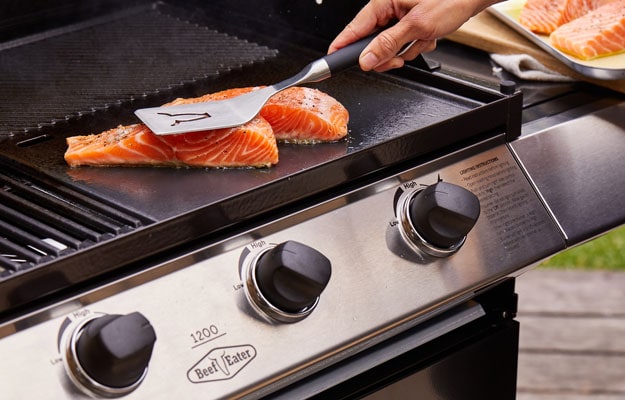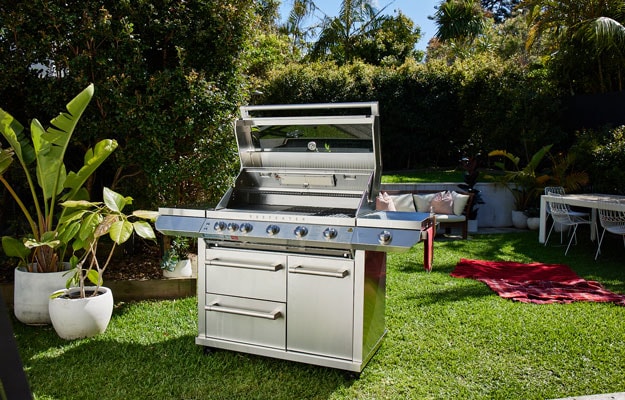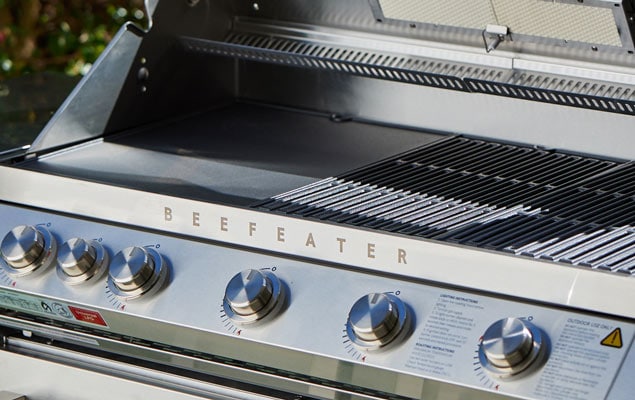Prepare your salmon
Don’t shock a cold piece of salmon. Before barbecuing your salmon, make sure you take the fish fillet out of the fridge for 15 minutes so it can get to room temperature. Like a steak, fish is a bit like a muscle that needs to relax to be tender and juicy.
Prepare your BBQ
Fire up your BBQ, which should be clean from last use and preheat. BeefEater BBQs offer high-quality cast iron non-stick plates and grills with stainless steel flame tamers, making barbecuing food a non-stick experience. Whether you choose to cook on a hotplate or give a grill effect by using one of our accessories like the Grilling Pack for Signature ProLine built-in barbecue, the optimal temperature for cooking salmon on the BBQ is medium to high heat.
Season your salmon portion
Whether you’re going for a marinade or the traditional salt, pepper and oil with a high smoke point, season your salmon while keeping the skin on. When it comes to cooking, the salmon skin provides a layer of safety between the BBQ heat and the fish’s flesh, while the oil on the portion, rather than the BBQ plate will stop sticking.
Get your timing right
With salmon, you don’t want to overcook it. Remember, like steak, it will continue to cook when off the hotplate. So how long you barbecue salmon will depend on the size and how well done you like it. For a regular-size portion, it should cook in about 6-7 minutes. To ensure the fish holds together and doesn’t fall apart or stick to the grill grates, grill the salmon skin-side down for 80% of the cooking time (around 4 minutes), before flipping once using the BeefEater multifunctional BBQ spatula and doing the remaining few minutes.
Signs of being cooked
You’ll know when salmon is cooked on the BBQ when it’s crisp at the edges. If you like it cooked all the way through rather than rare in the middle then keep cooking until the fish feels very firm to the touch. Otherwise, you can use the BeefEater wireless digital thermometer to check the centre temperature. The salmon will be medium-rare when an instant-read thermometer inserted into the thickest portion reads 120 degrees.



